Knees Over Toes Program: Best Exercises to Eliminate Knee Pain
[ad_1]
Whether squatting or lunging, athletes are told ad nauseam never to let their knees go over toes under the assumption it added undue pressure to the joints. But as Ben Patrick, founder of Athletic Truth Group, came to find, that very pressure bolsters the knees, increasing strength for joint protection and longevity. Training that emphasizes this range of motion saved Patrick from surgeries and reliance on painkillers, and he’s since taken to Instagram to share his breadth of knowledge.
“Knees over toes was a broadly misunderstood subject and my dedication to making it safe and simple has arguably resulted in the most knee success stories—ever,” Patrick says, with the likes of Henry Cavill and Sam Heughan among his staunch supporters.
“Understanding knees over toes training rescued me from painkiller addiction and surgeries,” he adds. “These exercises allow your body to handle pressure at your own level, thereby increasing strength for protection as well as nutrient delivery to make your knees last longer.”
Here’s your plan for pain-free knees for years to come. These are among the best leg exercises you can do.
Knees Over Toes Program: The 10 Commandments of Healthy Joints
Directions
These 10 exercises can be scaled to all abilities. Do each at least once per week, adding to body part-specific or full-body routines for a balanced program—and pain-free knees.
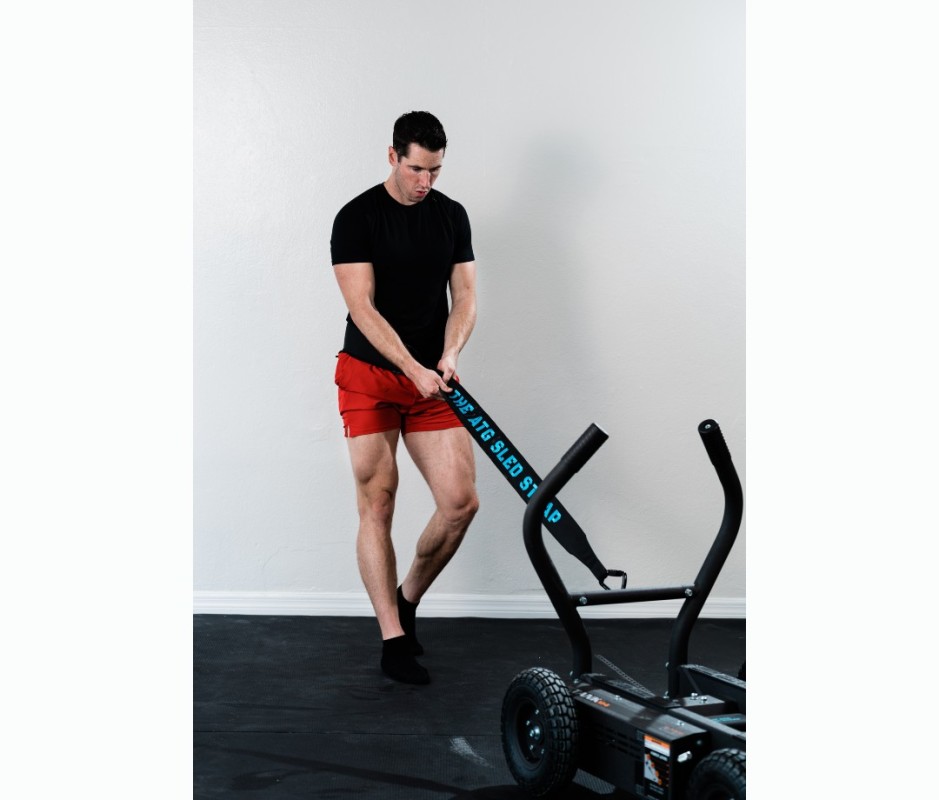
Forrest Conner
1. Backward Sled Pull 1 x 10 min.
How to Do It
- Load a sled with moderate-to-heavy resistance (i.e. half your body weight). Attach upper-body straps and pull them taut with arms straight, to start. Alternatively, you can attach a waist strap to the sled to keep this movement lower-body dominant.
- Walk backwards, “reaching” lead foot back, planting the ball of foot, then driving through to propel each step.
- Start slowly, then gradually increase speed so you’re maximally exerting yourself by the end.
Pro Tip
If you load too heavy, you won’t be able to get the speed; if you reach too far, you won’t get the rhythm; and if you don’t reach far enough, you won’t get the range, according to Patrick. If you’re just starting out, begin with 5 minutes.
Why It Works
Backward sled pulls strengthen the feet and quads, and increase blood flow to your knees without directly stressing the joint.
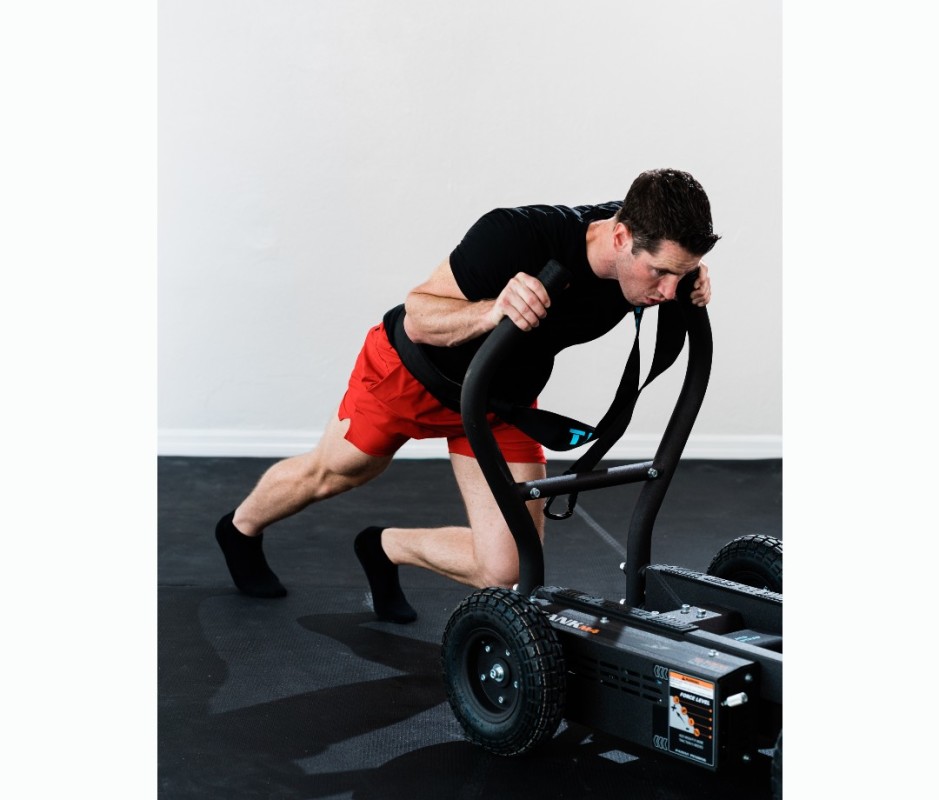
Forrest Conner
2. Forward Sled Push 1 x 5 min.
How to Do It
- Place hands on high poles and hinge hips forward slightly, to start.
- With back straight and core engaged, drive through balls of feet and push sled with small, slow steps at first—then gradually get faster.
Why It Works
Going forward with the sled puts your knees even farther over toes, strengthening your feet and lower legs to a greater degree.
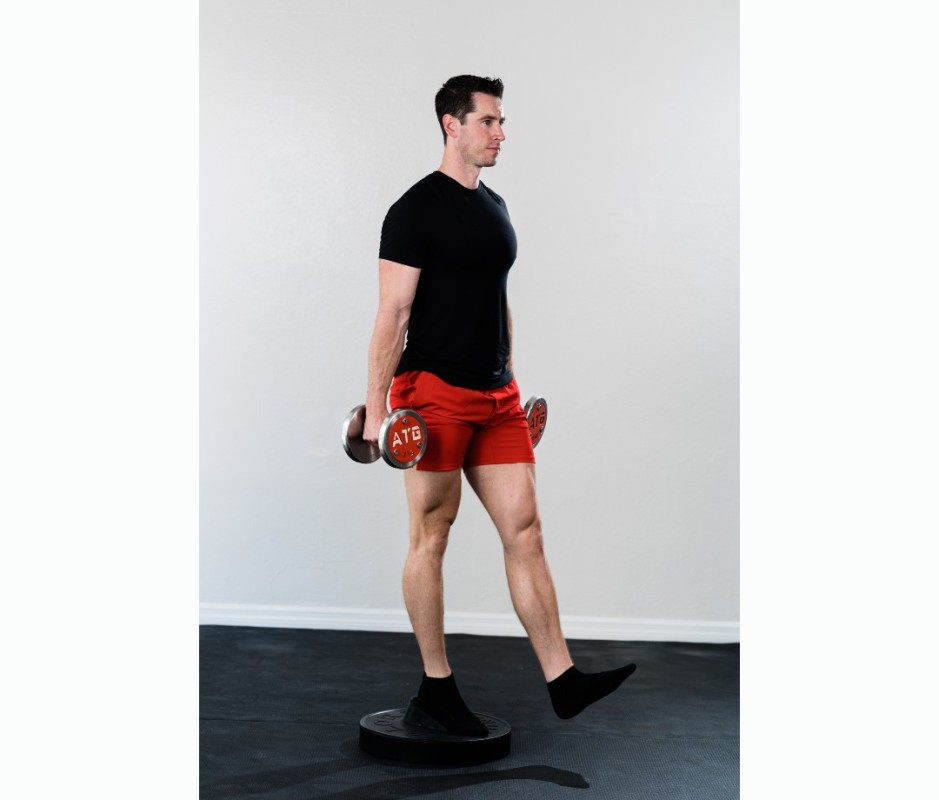
Forrest Conner
3. Poliquin Stepup 3 to 6 sets x 15 to 25 reps per side
How to Do It
- Place a wedge on top of a step or weight plate 4 to 6 inches off the ground, to start.
- Place right foot on wedge with left leg hanging off platform, foot flexed (shown).
- Bend right knee to lower left leg, tapping heel to ground, then drive up to start.
- That’s 1 rep. Perform all reps on one side, then switch.
Why It Works
This stepup variation strengthens your VMO, the teardrop-shaped quad muscle. Oftentimes, this is a weakness in people’s bodies that can lead to knee pain.
Pro Tip
Beginners, start out assisted, holding ledge; intermediate, go unassisted with bodyweight; advanced, hold dumbbells.
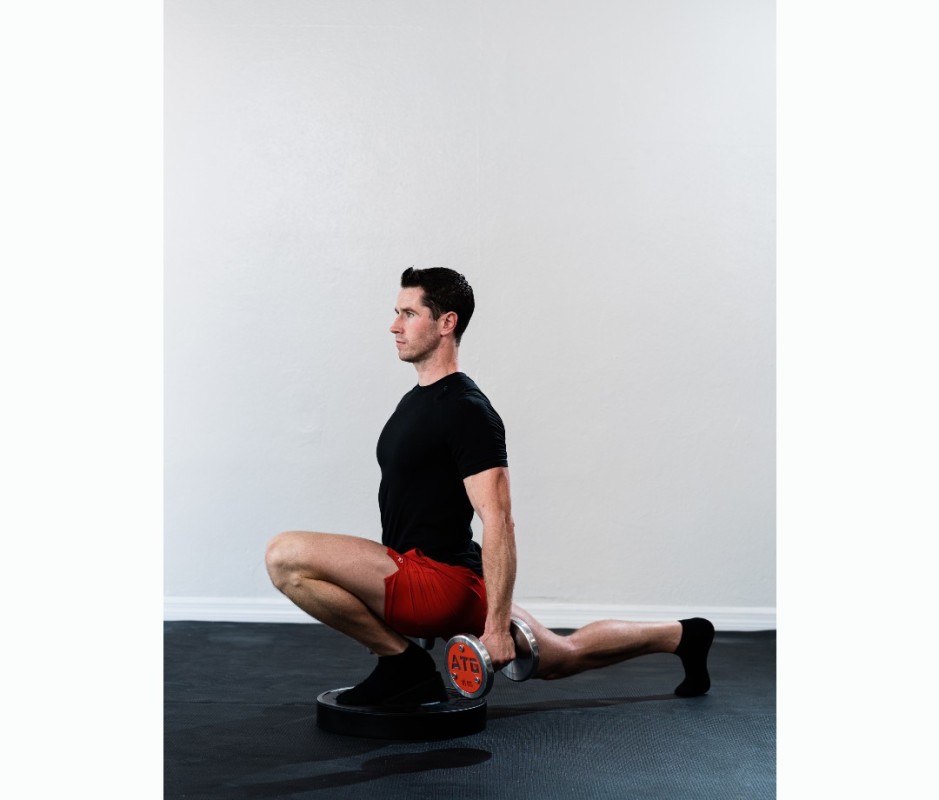
Forrest Conner
4. ATG Split Squat 4 to 8 sets x 6 to 8 reps per side
How to Do It
- Place left foot on wedge atop weight plate and step right foot far back into exaggerated split-squat position, heel lifted, to start.
- Keep chest tall and back straight as you bend left knee to lower into a deep split squat.
- That’s 1 rep. Perform all reps on one side, then switch.
Why It Works
This exercise encourages you to generate power through your lead foot, activates the VMO muscle, and promotes hip extension—eliminating back pain and strengthening the anterior of the body.
Pro Tip
Try to get the back of your hamstring to touch your calf for full range of motion and extend your back leg straight. If you can’t get your hamstring to touch your calf from this position on the ground, step your lead foot on top of two thick weight plates (shown). As you progress, add weight.
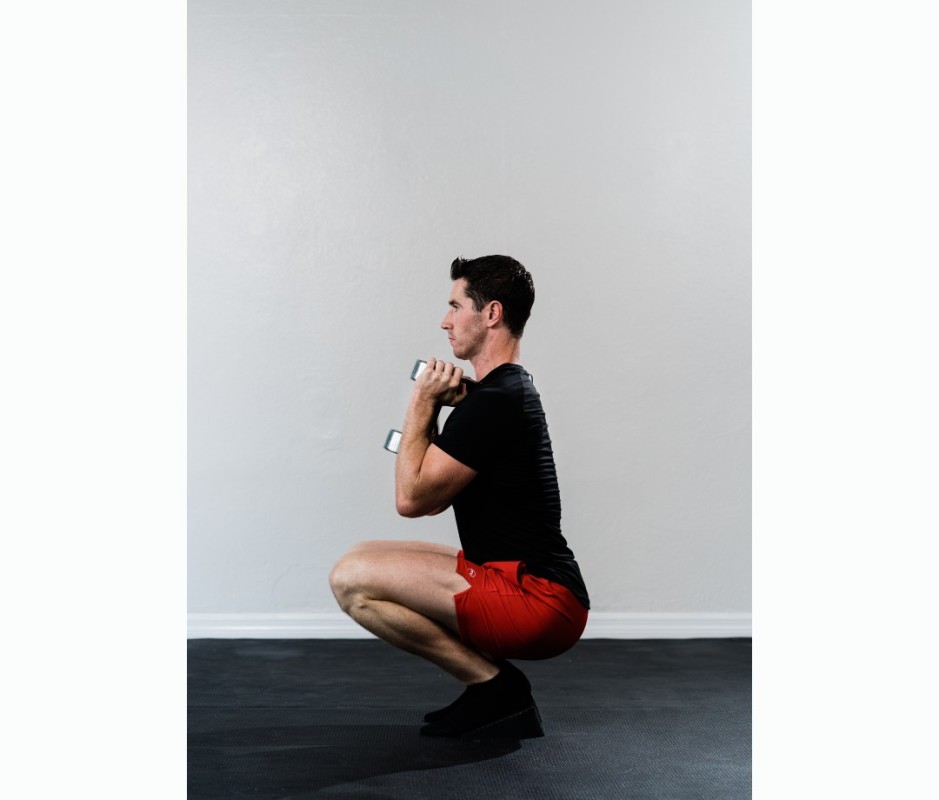
Forrest Conner
5. Dumbbell VMO Squat 3 to 6 sets x 15 to 20 reps
How to Do It
- Stand slightly wider than hips with feet on wedges or plates to elevate heels, to start.
- Slowly lower, knees generating outward force until in a deep squat, hamstrings touching calves (shown).
- Pause at the bottom, then drive up.
- That’s 1 rep. Perform all reps on one side, then switch.
Why It Works
You’ll feel this in your inner thighs and VMO, which are the muscles it directly targets and strengthens. Placing your feet on wedges helps to strengthen and stabilize the knees.
Forrest Conner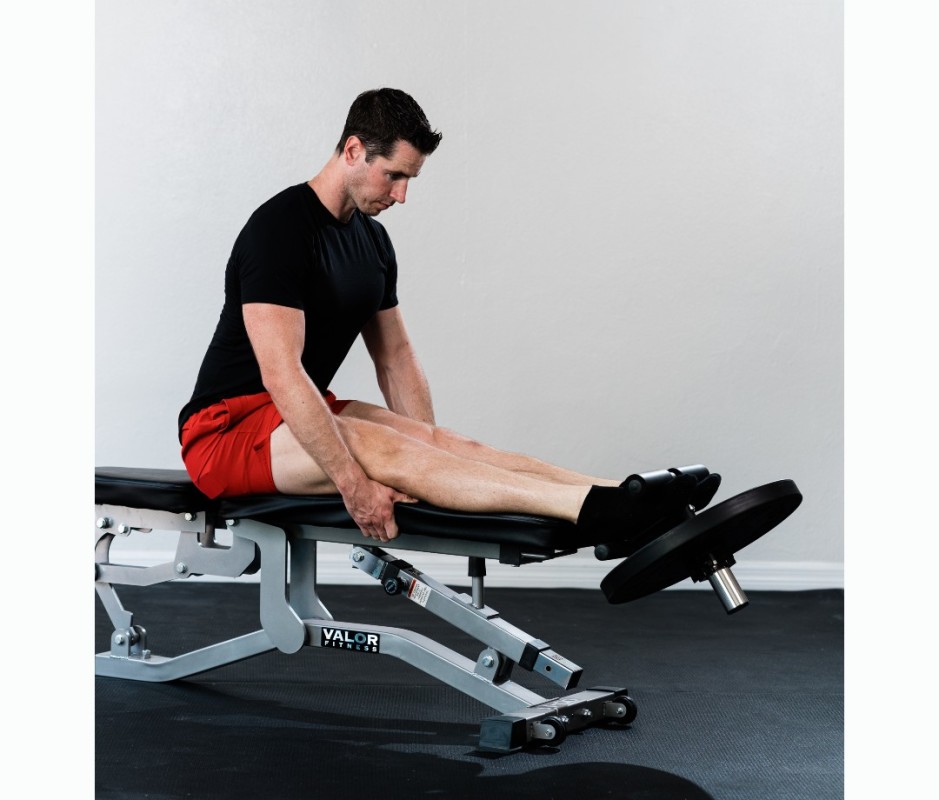
6. Tibialis Raise 3 to 4 sets x 15 to 20 reps
How to Do It
- Sit on a flat bench with ankles over edge in a tib bar (or set up in a tibia dorsi calf machine), to start.
- Hold onto the sides of the bench and flex feet toward ceiling to raise, then extend toes back to start (shown).
- That’s 1 rep.
Why It Works
The first line of defense against knee pain is the tibialis anterior. It runs under the knee and acts as the lower body’s decelerator.
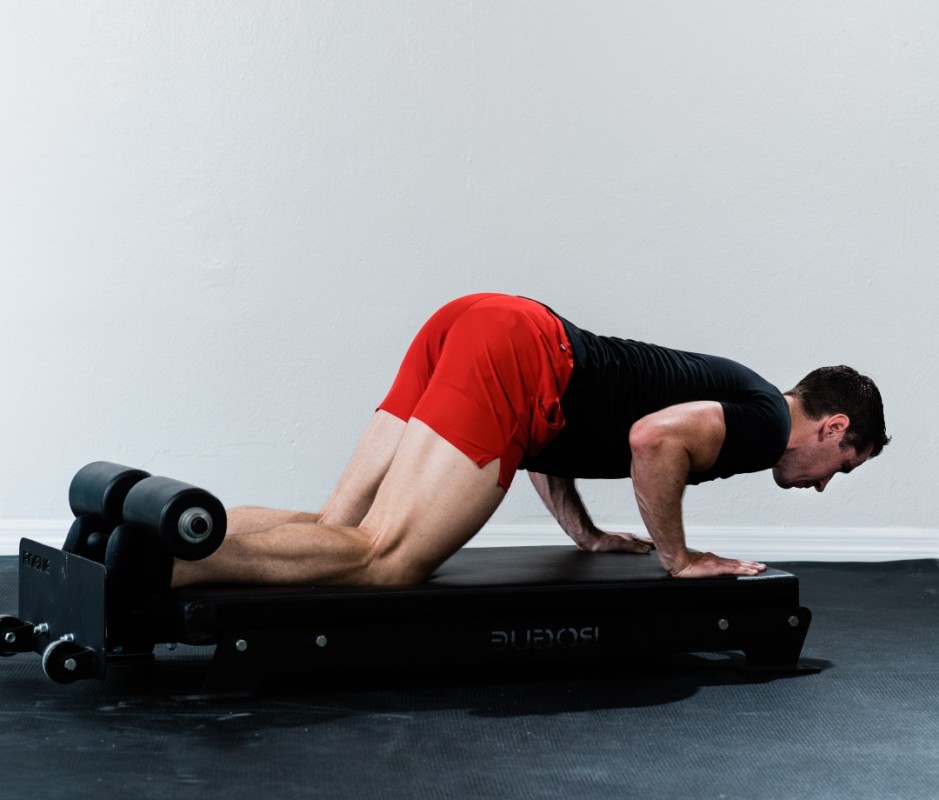
Forrest Conner
7. Nordic Hamstring Curl 3 to 4 sets x 5 to 10 reps
How to Do It
- Start on knees with a pad underneath for cushion and have someone hold your ankles to the floor (or anchor with fixed equipment), to start.
- Tuck chin and pelvis, maintaining straight line from head to knees as you fire up core, glutes and hamstrings, then slowly lower to the ground like a lever—trying not to break form.
- Use your hands to catch yourself when your hamstrings can’t hold any longer (shown).
- Engage glutes and hamstrings (and push off ground) to return.
- That’s 1 rep.
Why It Works
Nordics boost knee joint stability, as well as mobility and strength through the hamstrings, effectively mitigating injuries.
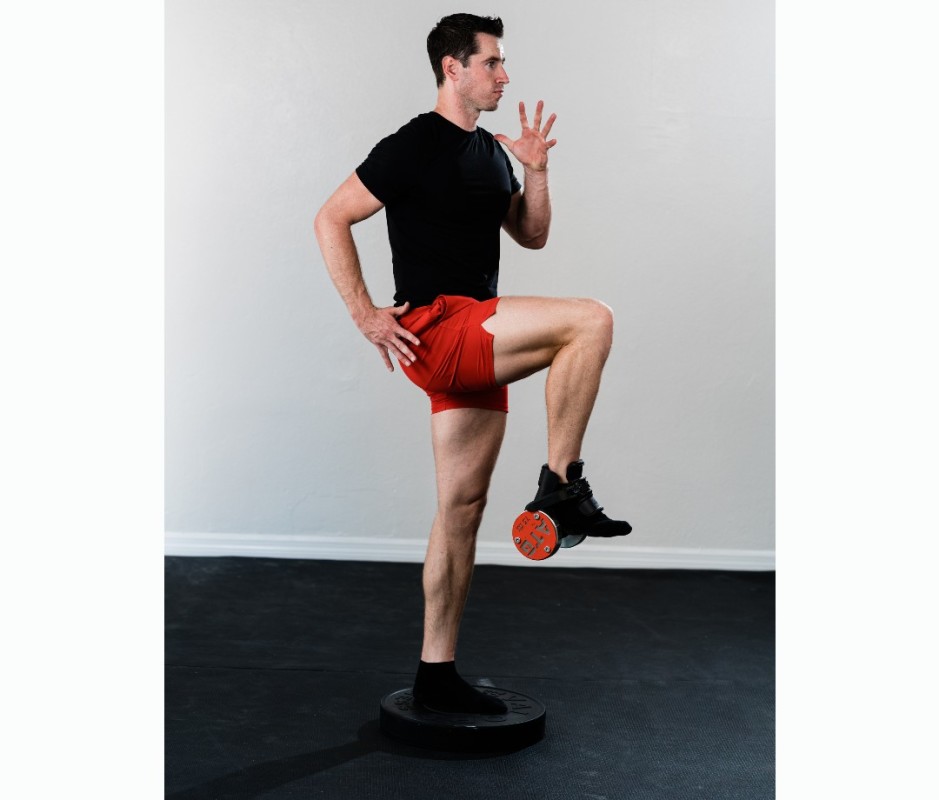
Forrest Conner
8. Hip Flexor Lift 3 to 4 sets x 20 reps per side
How to Do It
- Attach a light dumbbell to a ratchet-based shoe attachment, then fix to your right foot while left is on a weight plate, to start.
- Flex right foot, then drive knee up until parallel to hips (shown).
- Use hands to counterbalance (opposite arm swings, like a sprinter), then slowly lower to start.
- That’s 1 rep. Perform all reps on one side, then switch.
Why It Works
Enhancing strength and mobility through your hip flexors eases knee pain by putting less stress on the joint.
Related: 10 Ways to Protect Your Joints
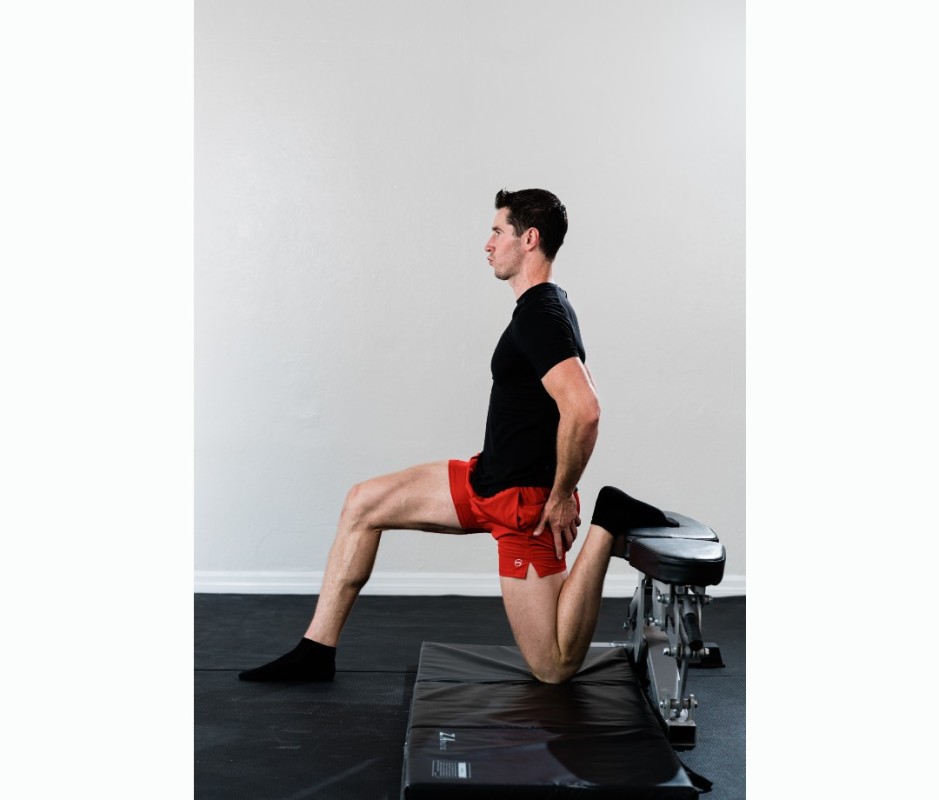
Forrest Conner
9. Rear-Foot-Elevated Hip Flexor Stretch 1 x 1 min. per side
How to Do It
- Place a pad parallel to a flat bench, to start.
- Stand in front of pad and bend left knee, placing top of foot on bench. (You can also do this on your couch at home.)
- Lower knee to pad, then contract quad and glute muscles to exert strength in static position.
- That’s 1 rep.
Why It Works
This is another great stretch to improve hip flexor mobility to improve the health of your joints and muscles.
Pro Tip
Tack on at the end of leg days or do throughout the day if you work remotely.
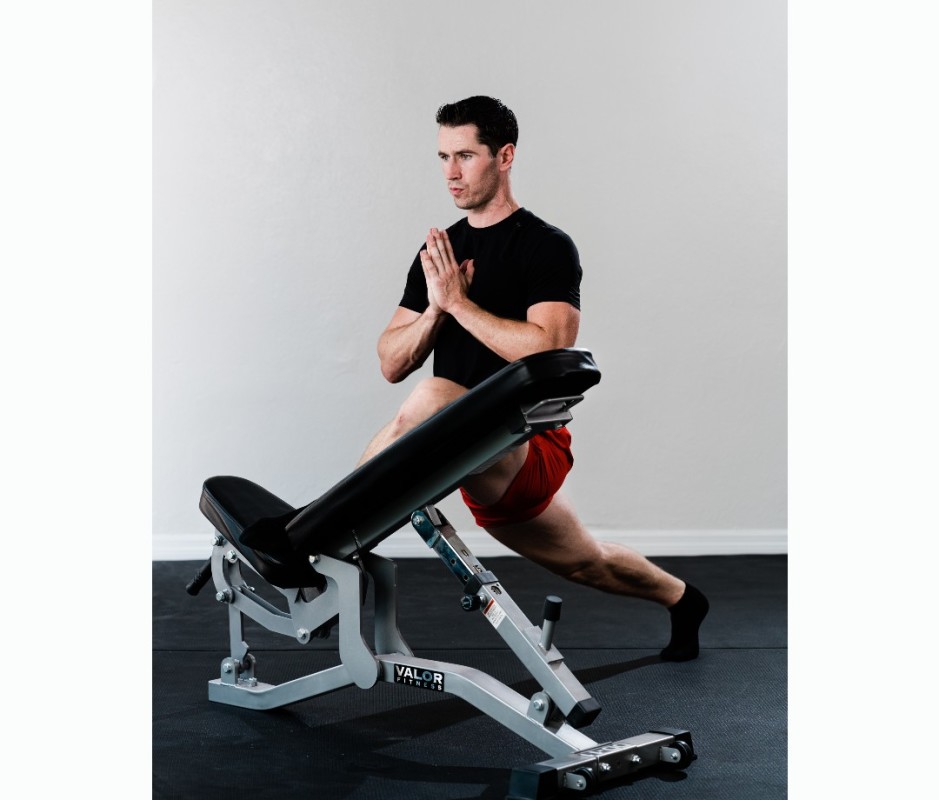
Forrest Conner
10. Incline Pigeon Pose 1 x 1 min. per side
How to Do It
- Set a bench to a 45-degree incline, to start.
- Place bottom of left foot on the “seat” of the bench, where it hinges, with your shin and knee resting on the “back” of the bench.
- Hold on for support as you step right foot back, then remove hands and lean into the bench until you feel a stretch through glutes, hips, and IT band.
- Keep knee against bench, foot flexed, and hold.
- Switch sides after round.
Why It Works
Unlike traditional pigeon pose in yoga, this variation on the bench promotes load and flexibility of the piriformis muscle that runs from your low back through your glutes to the top of your thighs. Your back leg also gets a nice stretch through the hip flexor.
Pro Tip
To make this exercise easier, increase the height of the bench; to make it harder, lower the angle.
Why You Should Trust Me
Brittany Smith is the deputy editor of Men’s Journal and formerly an editor at Men’s Fitness. She’s spent the last 10 years reporting and editing health and fitness content. She interviewed Ben Patrick, who has over 2 million Instagram followers for his successful ATG online coaching program.
[ad_2]
Source link


